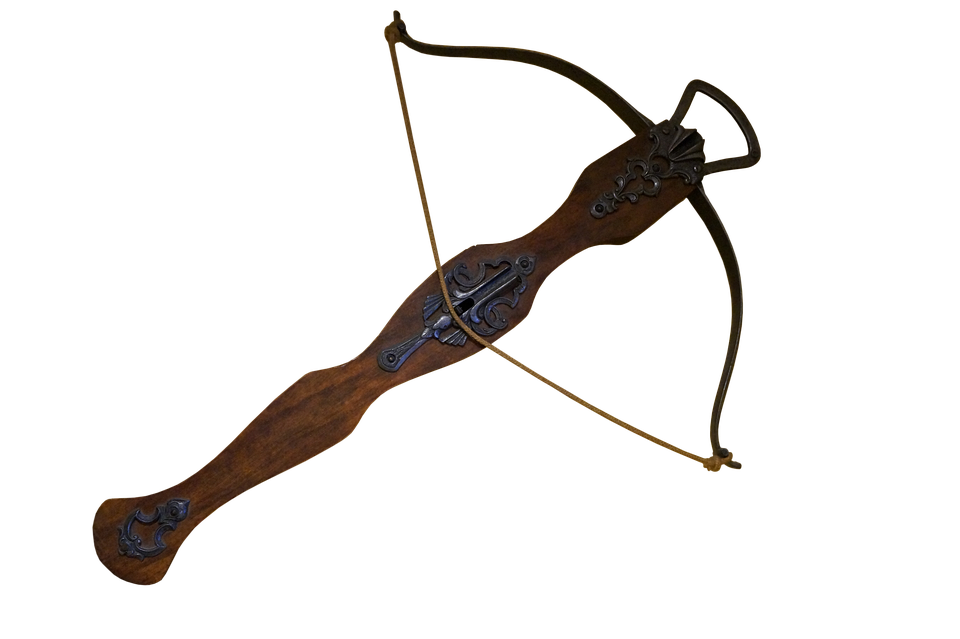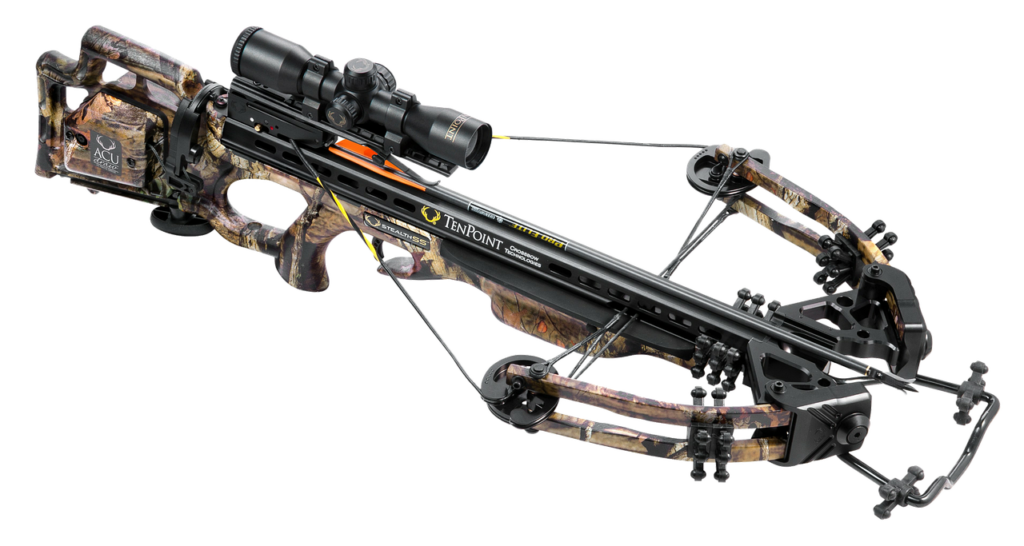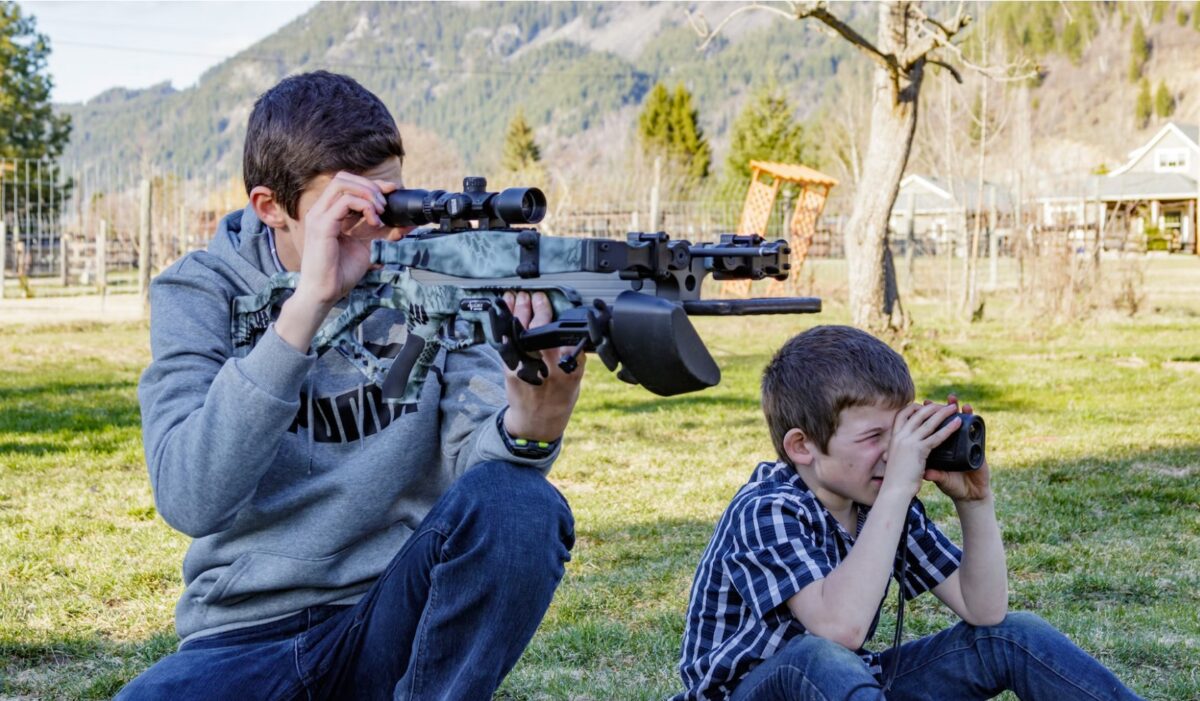With so many crossbow options out there, it can be challenging to find the right bow for your needs. Check out this guide to learn more about the differences between recurve and compound crossbows to make a better choice!
Basics of a Recurve Crossbow

A recurve crossbow is the simplest style of crossbow. They have two horizontal limbs on a basic stock and barrel. Their name comes from the shape of the limbs, as they curve away from the front of the bow before curving back in an “s” shape.
Most recurve crossbows are on the larger side with incredibly high speeds that can reach over 300 fps – with minimal mechanical add-ons like cables or cams.
Pros of the Recurve
Most people who hunt with a recurve crossbow prefer it because of its reliability, light weight, and straightforward design.
Because the mechanics of this type of bow are so simple, there’s not much that can go wrong. Even with wear and tear over thousands of shots, a recurve crossbow is much less likely to break down in the field. If it does break, they’re super easy to fix. From restringing to basic maintenance, you can do it all yourself; you almost never need to take it to a specialty shop.
Even though they’re physically bigger, recurves are lighter than their compound counterparts. They’re just the limbs and the bowstring, which means less material to carry over long, multi-day hunts.
And, for hunters on a budget, recurve crossbows tend to be less expensive due to their simple design. More premium options with more features will obviously increase the price, but you can get basic models far below the prices of compound crossbows.
Cons of the Recurve
The biggest disadvantages of the recurve crossbow include its maneuverability, stunted power, and draw weight.
Because they’re large and wide, your recurve is less maneuverable, which is particularly bad if trying to aim through dense foliage. They also don’t typically come with any noise reduction technology, meaning the shot you take is going to be loud and instantly alert your prey.
While recurves are still powerful, they will never reach the same speeds as the more technically advanced compound crossbows. The lack of kinetic energy will cut down on range and accuracy.
Finally, they tend to be less feature-rich compared to compound crossbows. Their simple design just isn’t easily adapted or tweaked in the way compound crossbows can. That means with the exception of scopes and cocking aids (built-in or attachable), you don’t get the features that help hunters feel more confident when they line up their shot.
Basics of a Compound Crossbow

They might look pretty similar to recurve bows, but compound crossbows use a more complex system of wheels (known as “cams”) and pulleys to store more energy. This means you get more power for your shot with less limb length. Compound crossbows can get over 400 fps per shot — perfect for crossbow hunters.
Pros of the Compound
So you’ll always get more speed and power from a compound crossbow than a recurve. Your accuracy is better, the limb length is easier to carry, and they’re easier to draw.
Because the bow’s strength comes from the pulley system, compound crossbows are more compact and easier to carry around the brush. Set up in a treestand in seconds and easily aim between trees and bushes without getting caught on branches.
Compound crossbows also tend to be packed with features due to the modifiability of the cams, pulleys, and limb length and shape. That means noise reduction, increased power, accuracy improvements, and more are all possible features for compound crossbow models.
Cons of the Compound
It’s not all burgers and beer with a compound crossbow, though. You will need to carry around a bit of extra weight, due to all the extra components.
You’ll also need to prepare yourself for more maintenance. And one of the mistakes hunters make with compound crossbows is thinking you can do it all yourself. That can actually be really dangerous — besides some minor pre-hunt lubing and prep, you’ll need to take your crossbow to a trained professional for a lot of maintenance, like restringing your crossbow.
With all the extra weight from the pulley system, this type of bow can be a burden for long hunting trips, and they’re more difficult to aim and hold steady. There’s also a higher chance of something breaking in the field due to how many components are used in its operation. You trade power for reliability.
And with increased power and mechanical complexity comes increased price. Even basic compound crossbows can be more expensive than recurve ones. They’re more of an investment.
Final Thoughts
At the end of the day, the best style of crossbow for you depends on what you want. Do you want a traditional, tried-and-true design with proven reliability and easy maintenance? A recurve crossbow is for you. Do you need uncompromising power and more features that improve accuracy, reduce noise, and more? A compound crossbow is the clear choice.
Whatever you choose, we wish you luck on your next venture into the wild, equipped with your brand new crossbow.
Crossbow prices
Texas Outdoors
Latest posts by Texas Outdoors (see all)
- The Best Ideas for Storing an Outboard Motor – July 9, 2024
- Safety Tips for UTV Off-Roading in Icy Conditions – July 9, 2024
- How To Take Care of Your Golf Cart in the Summer – July 2, 2024

Leave a Reply